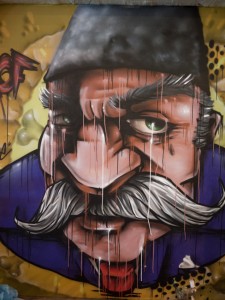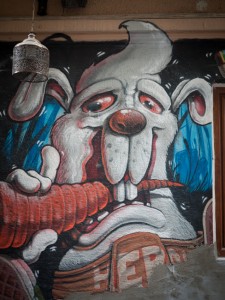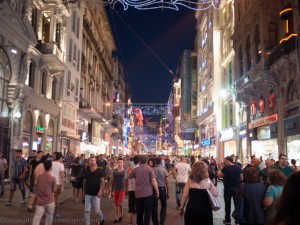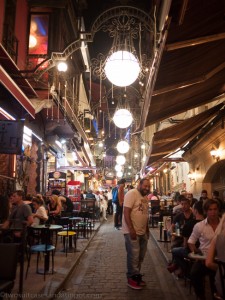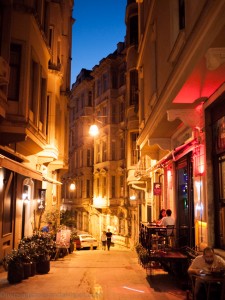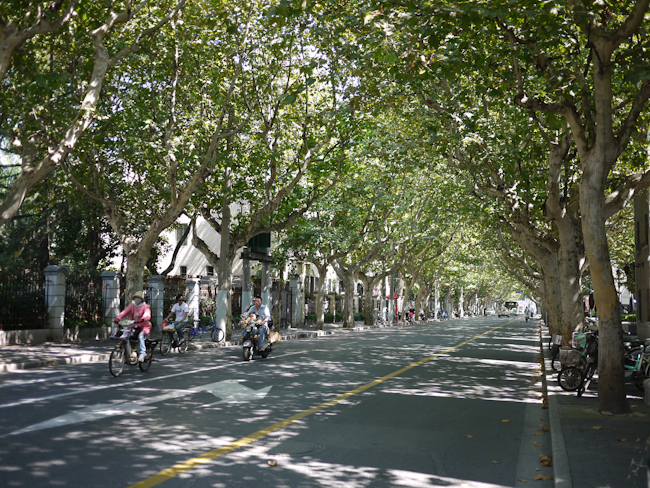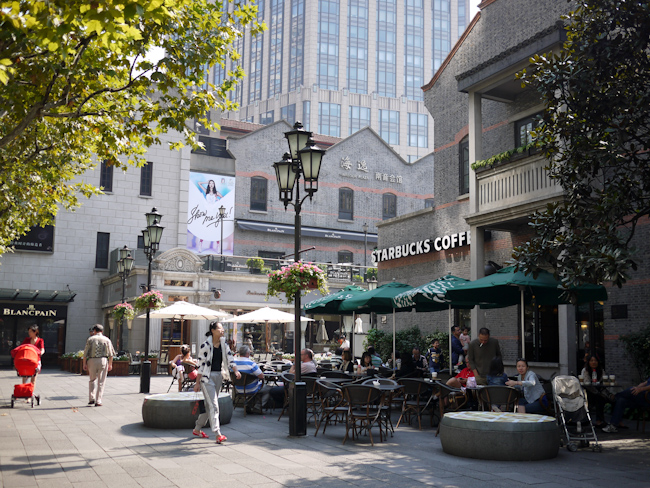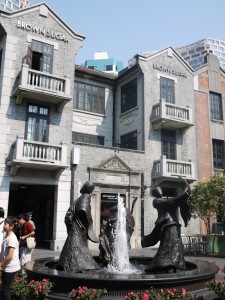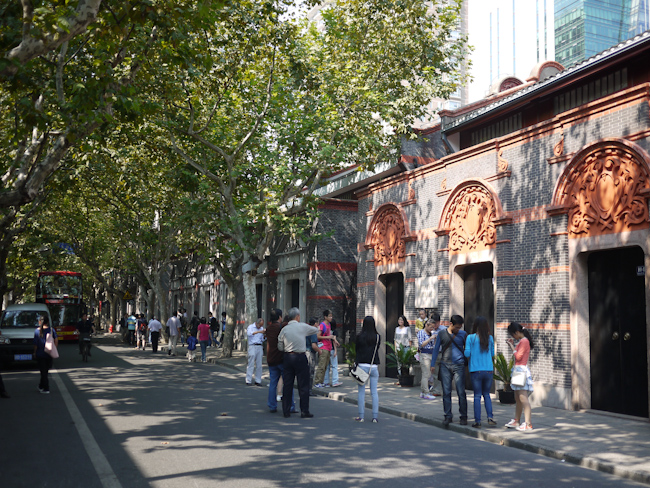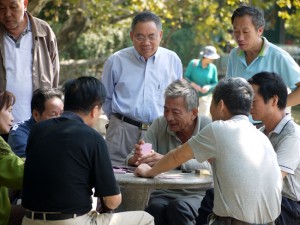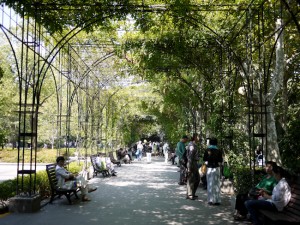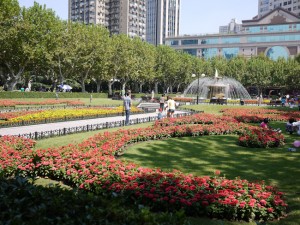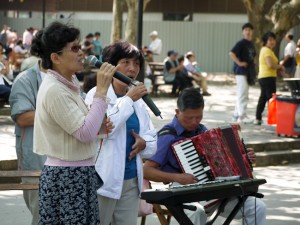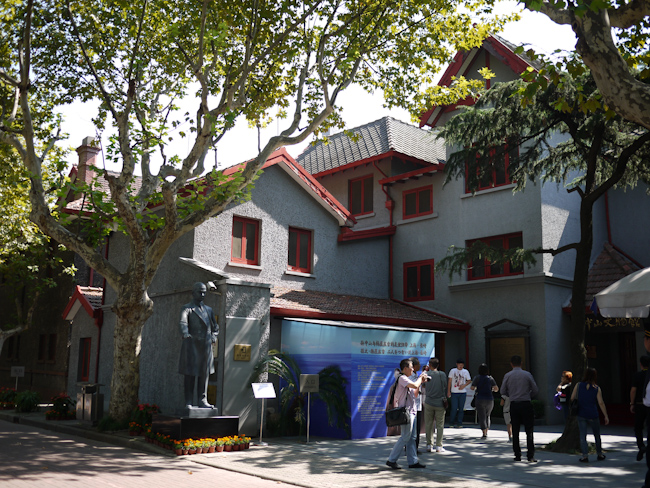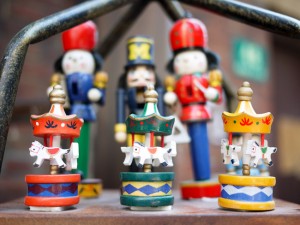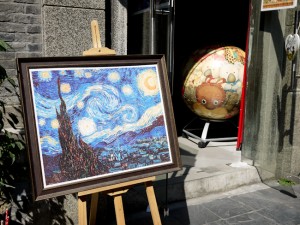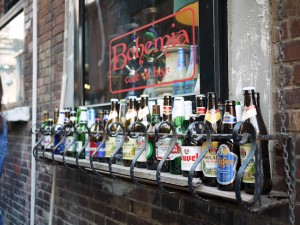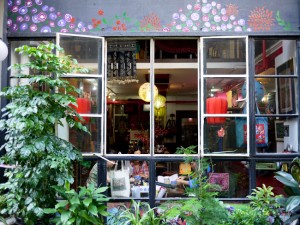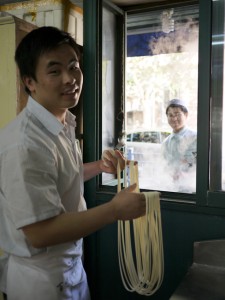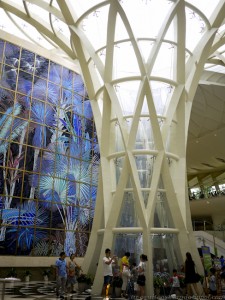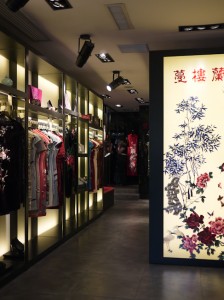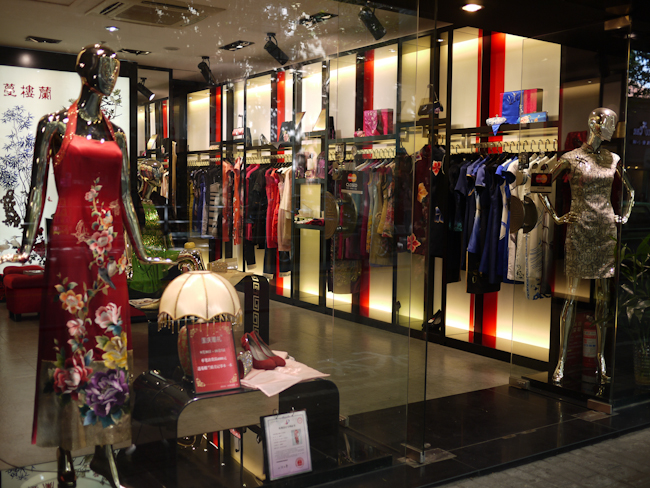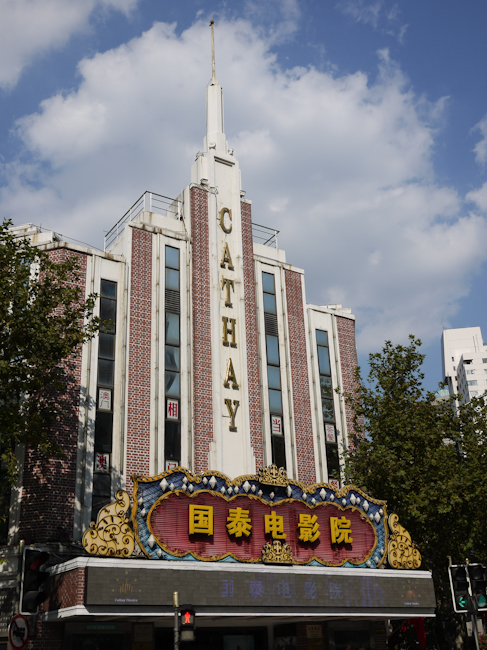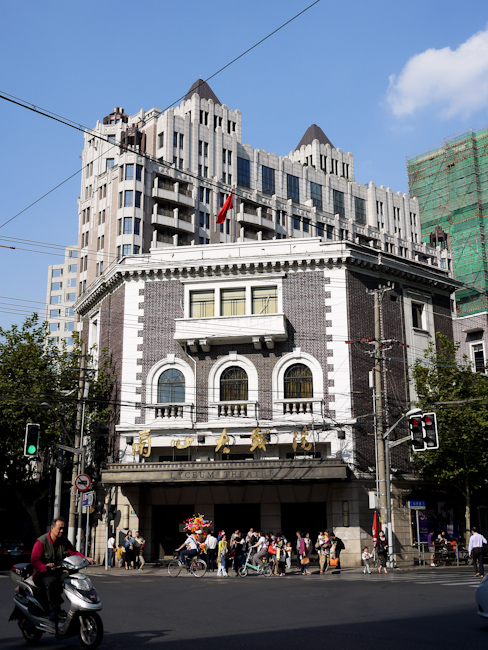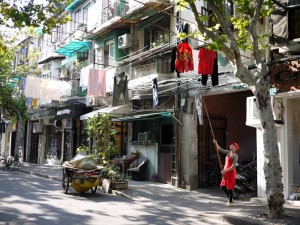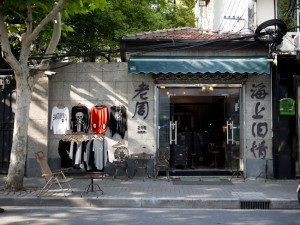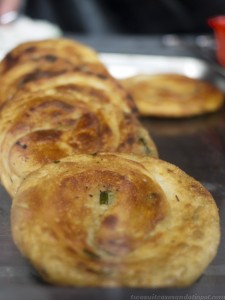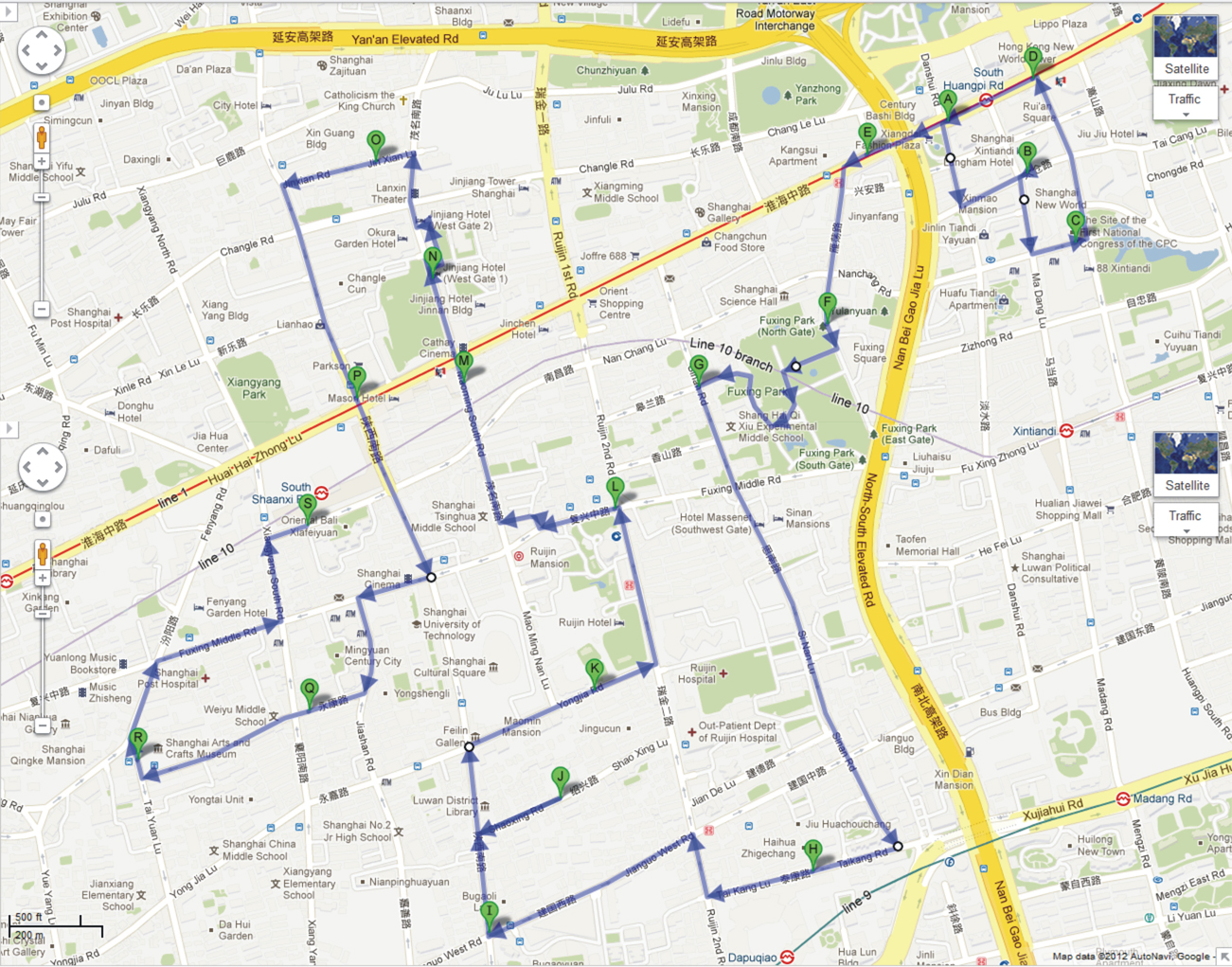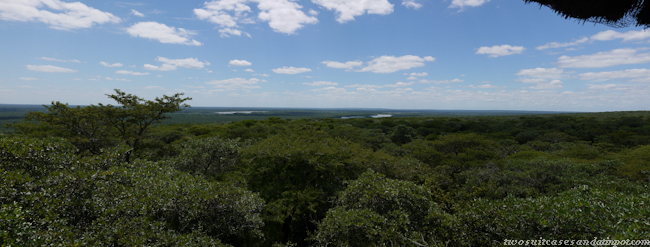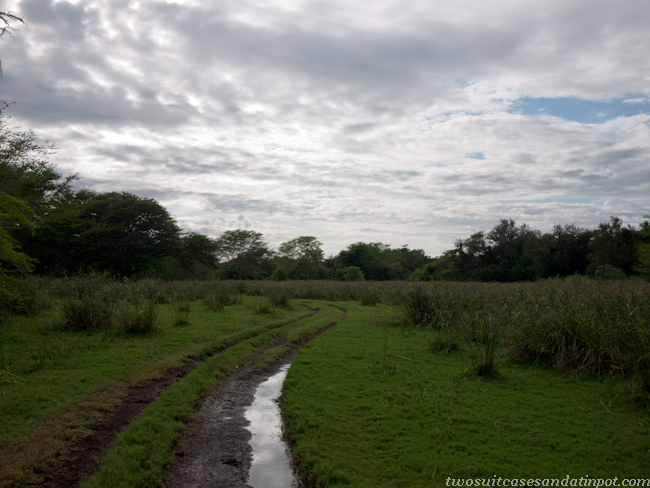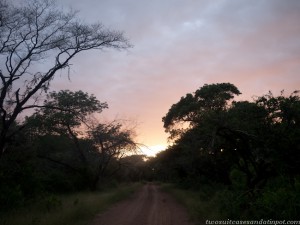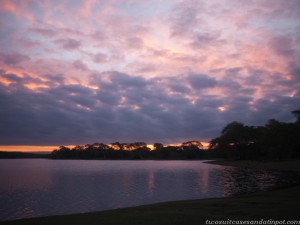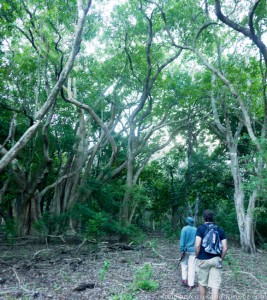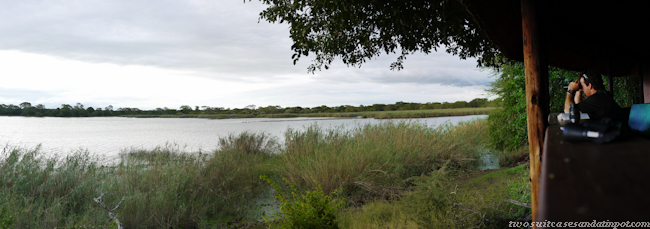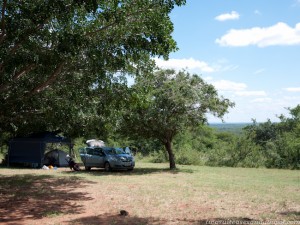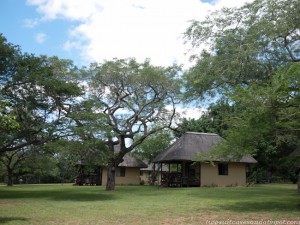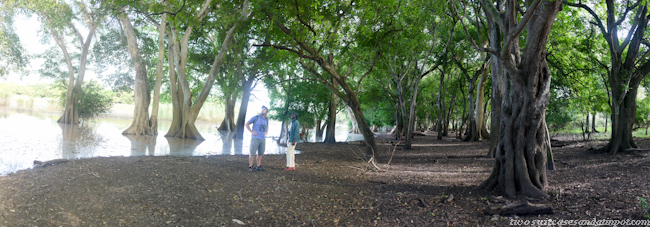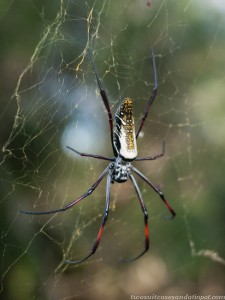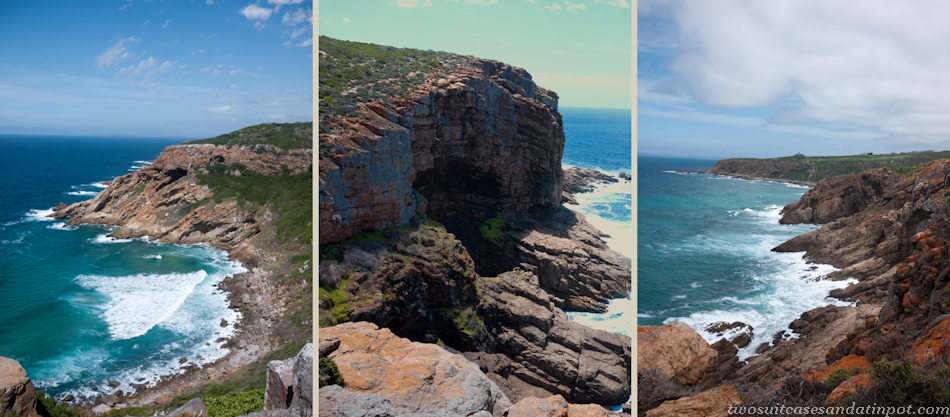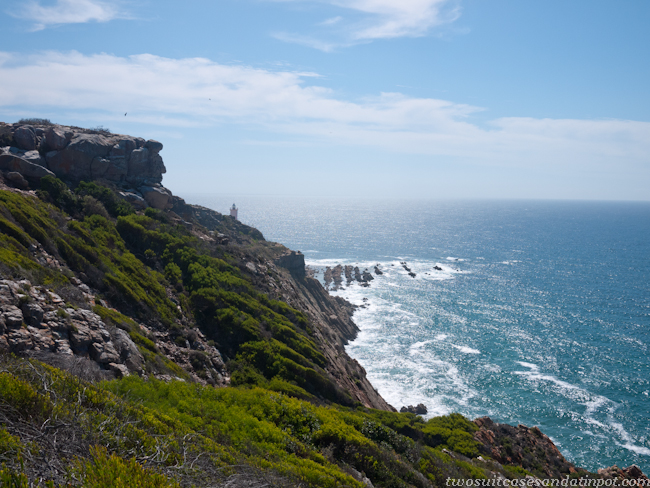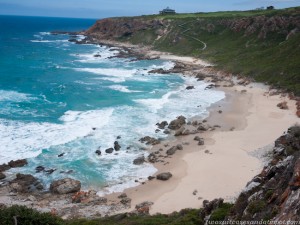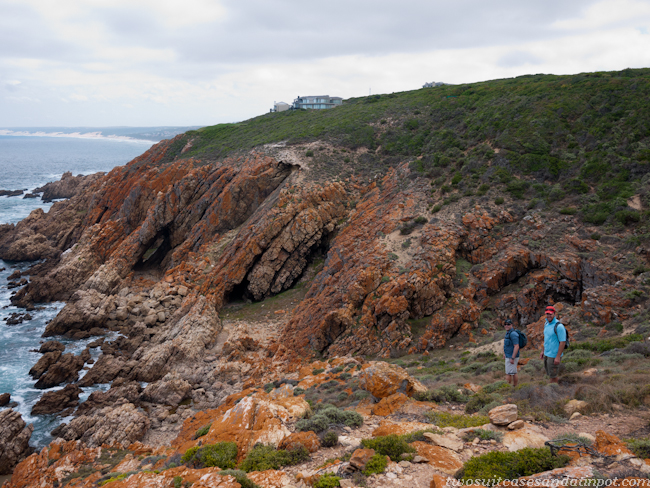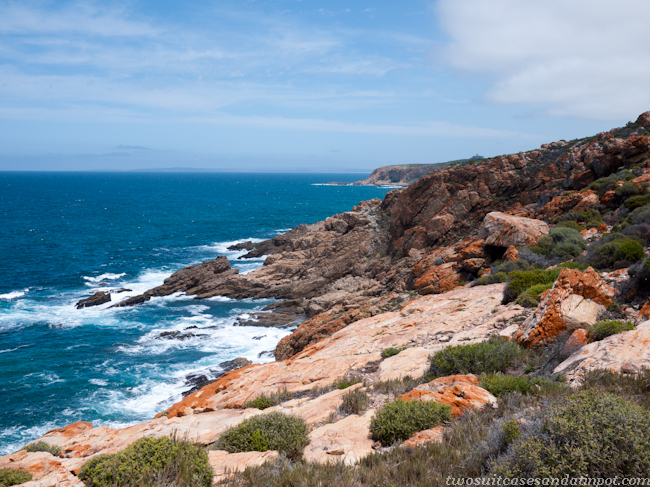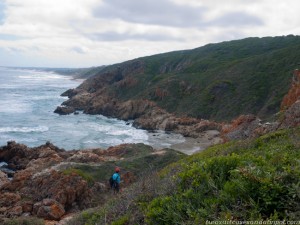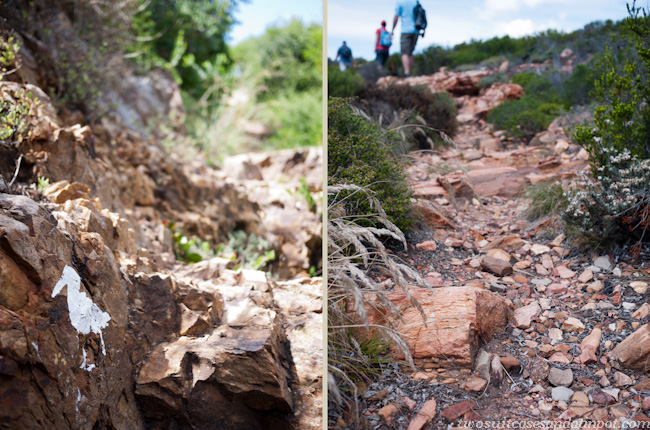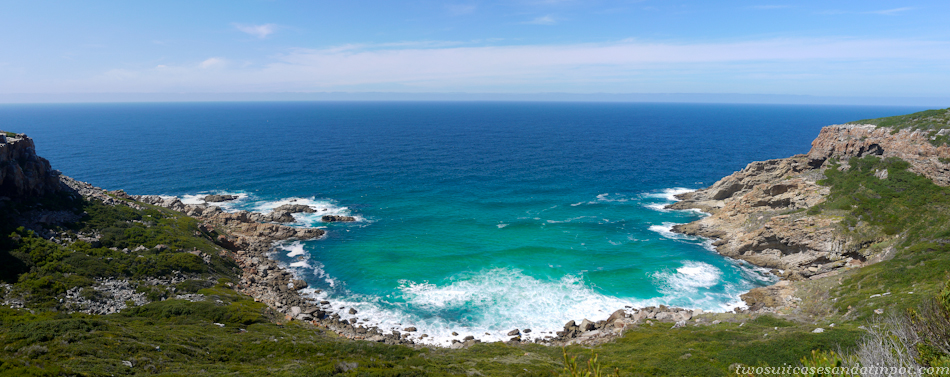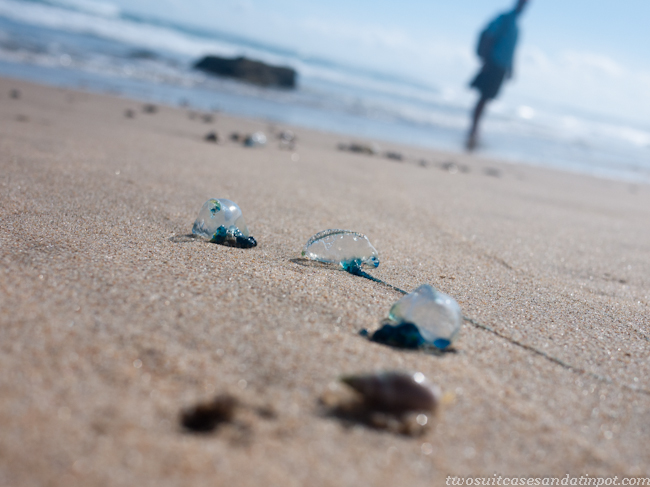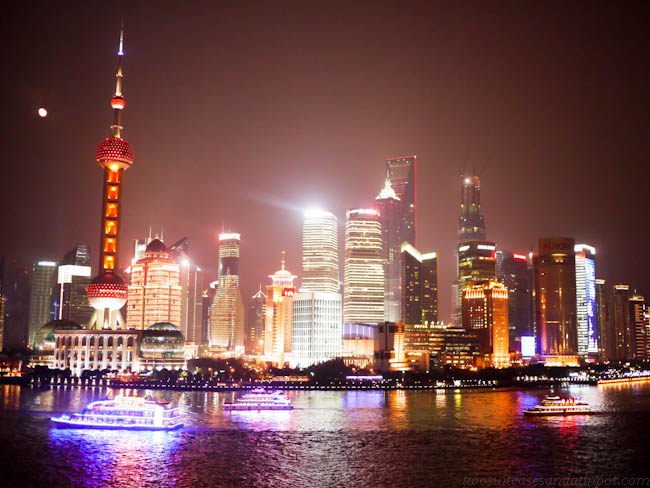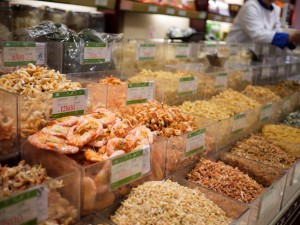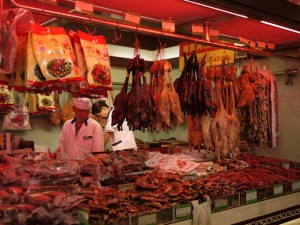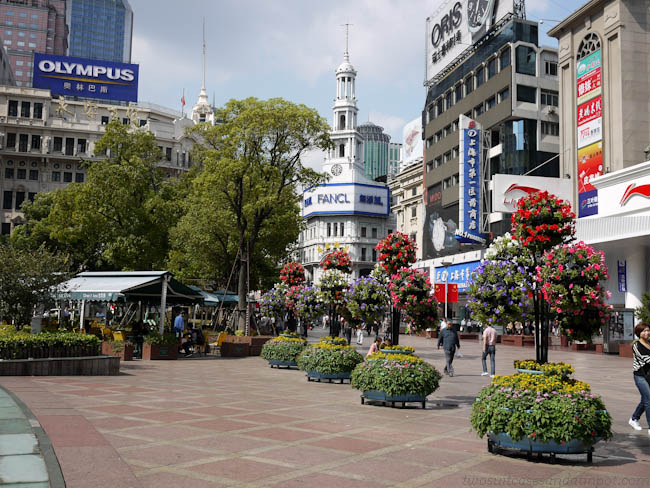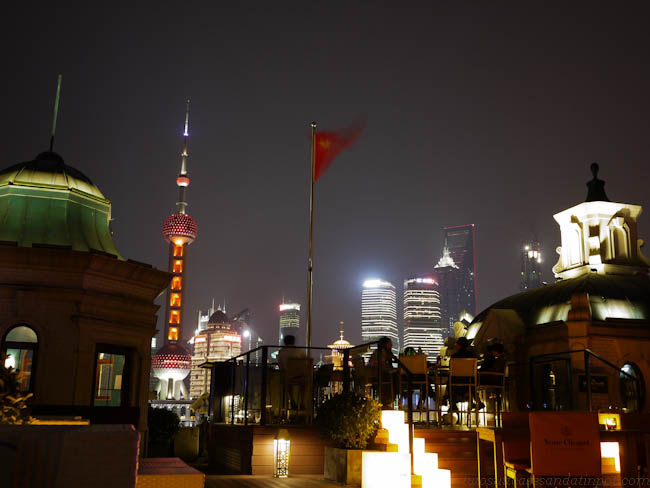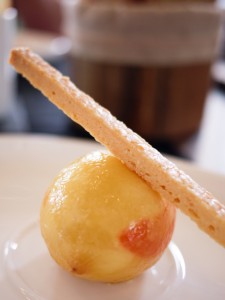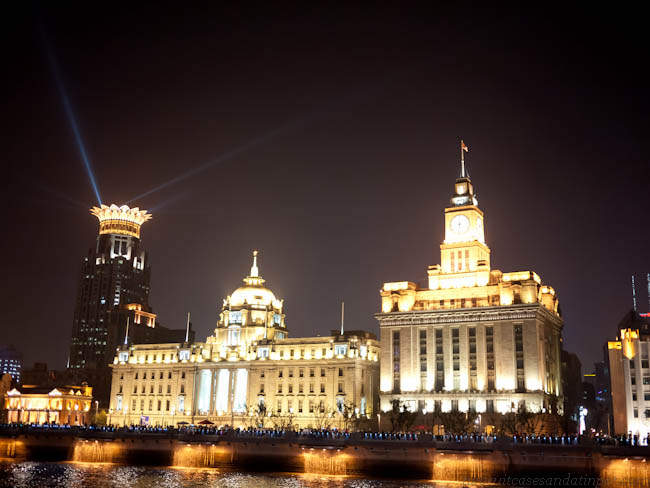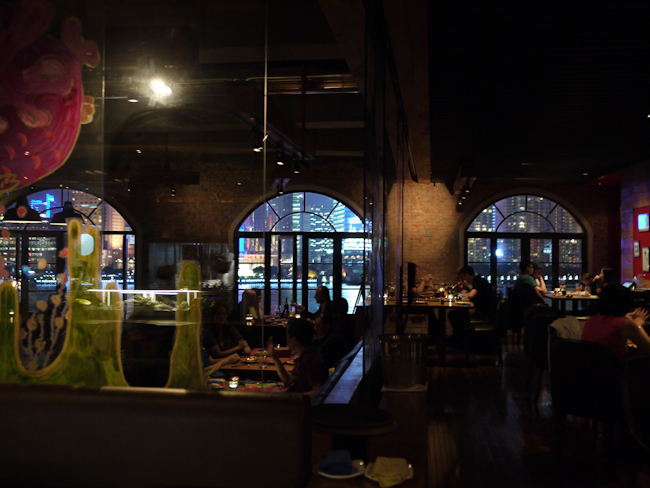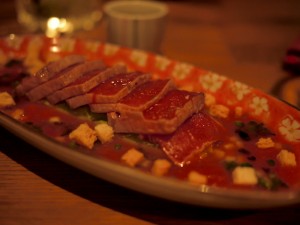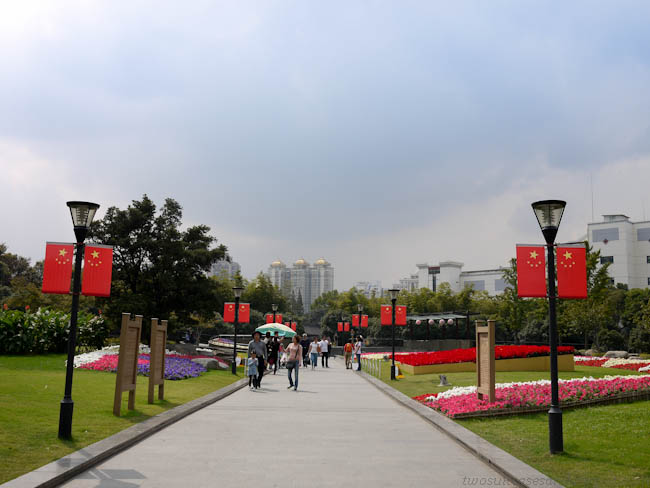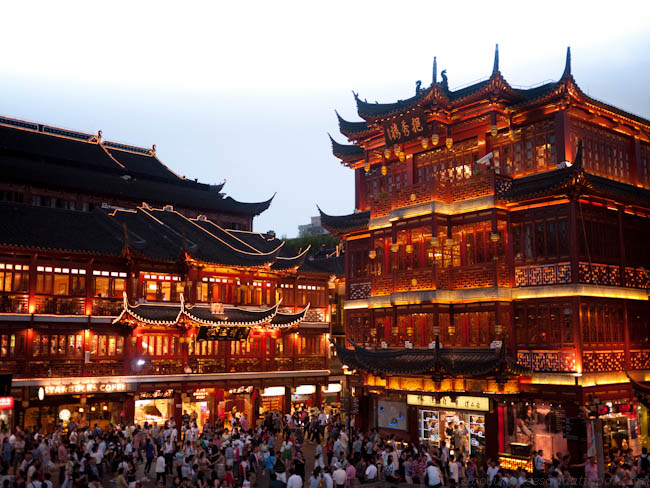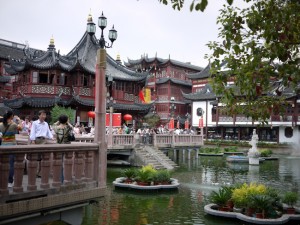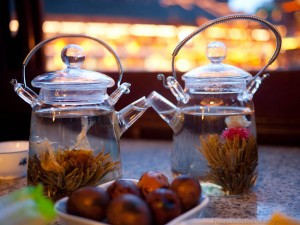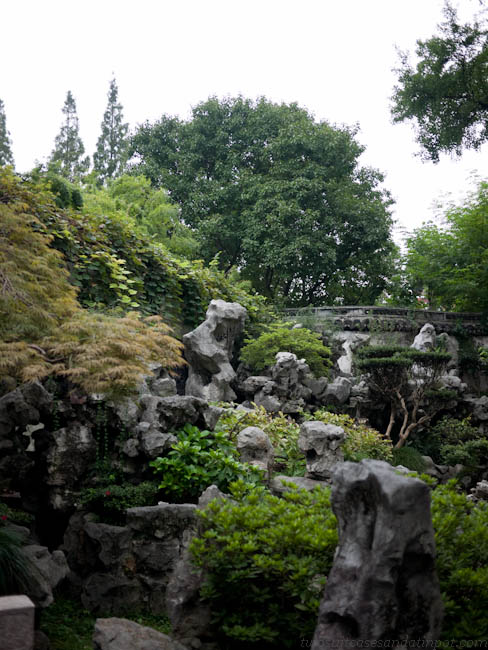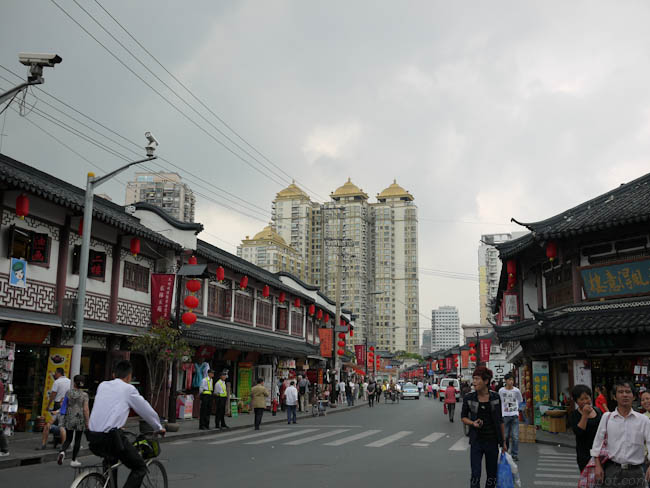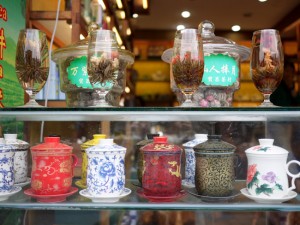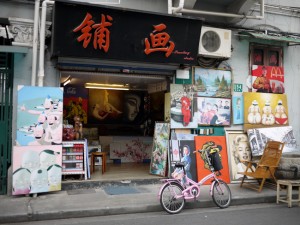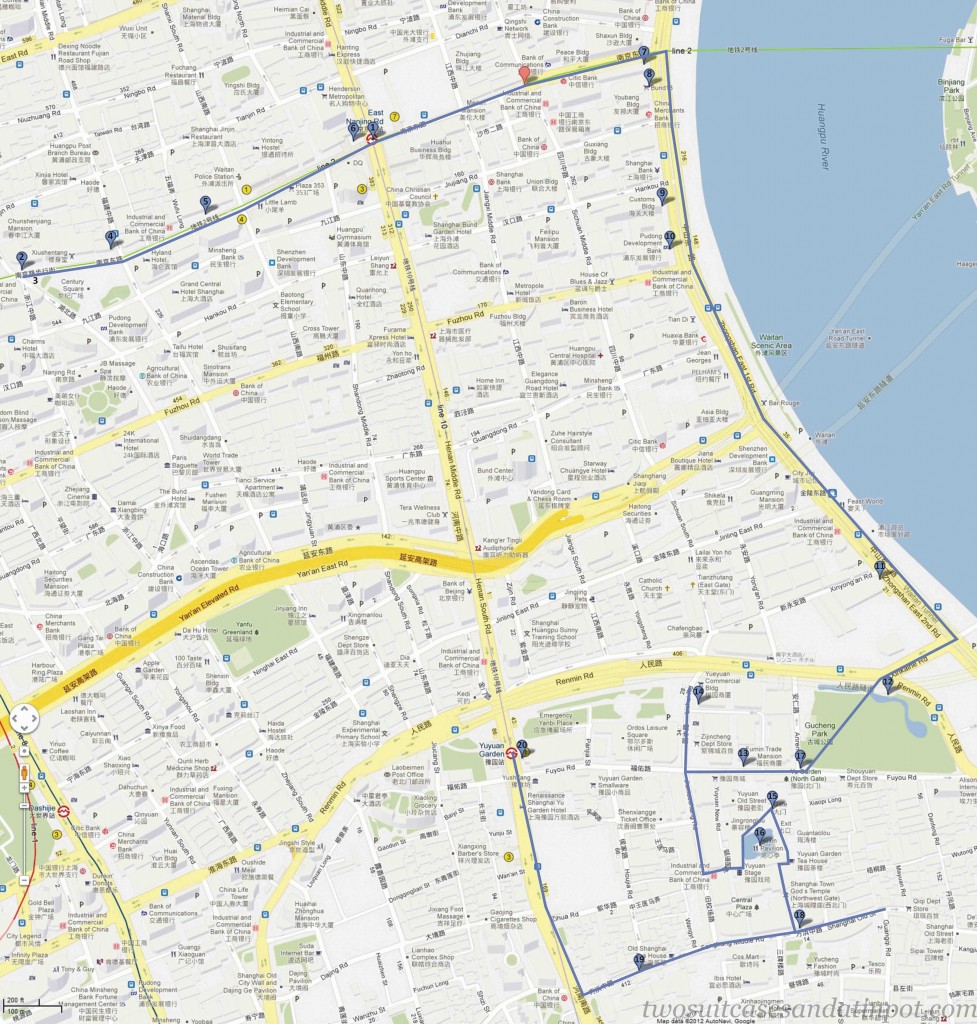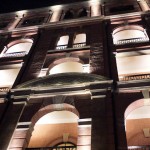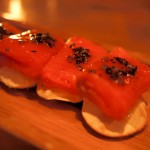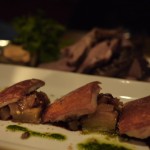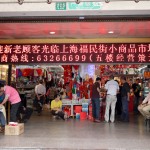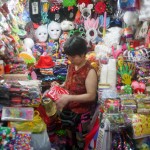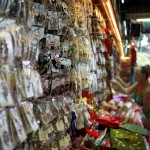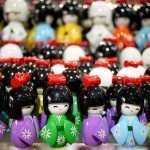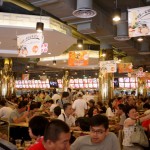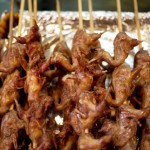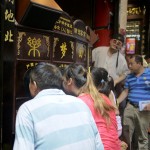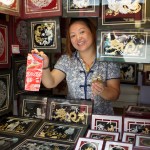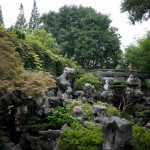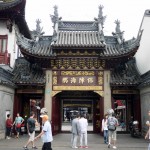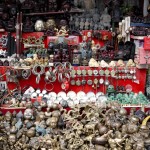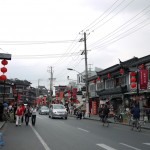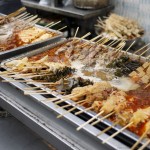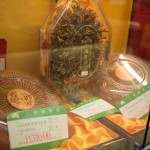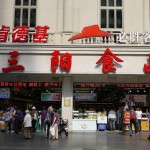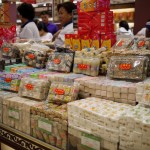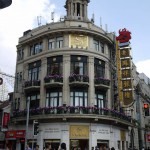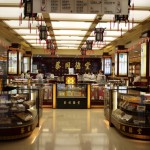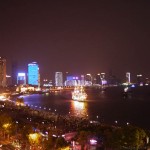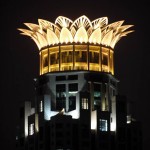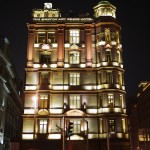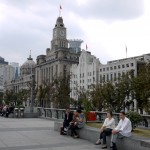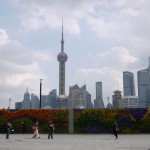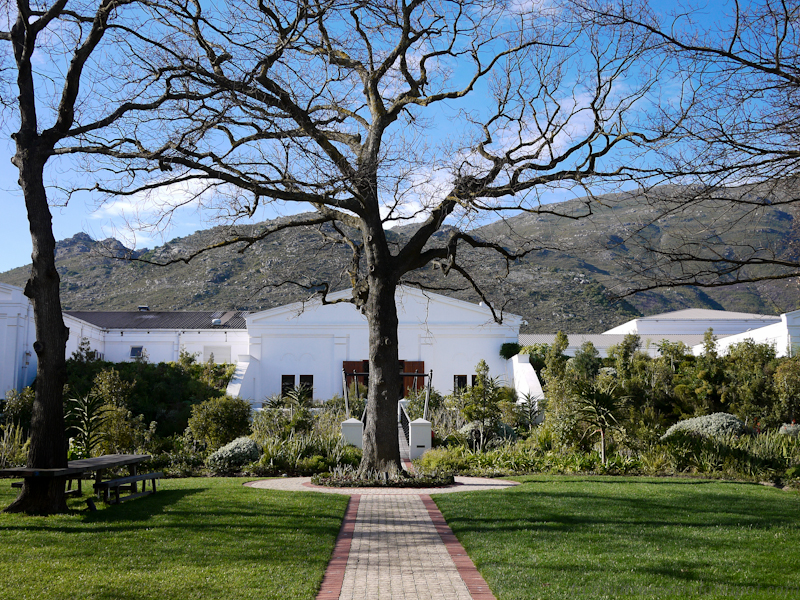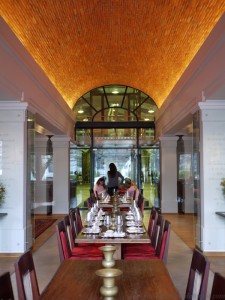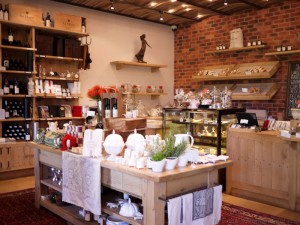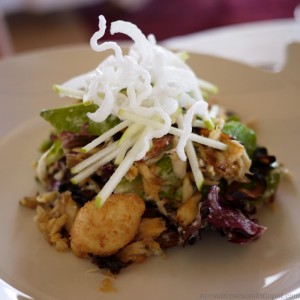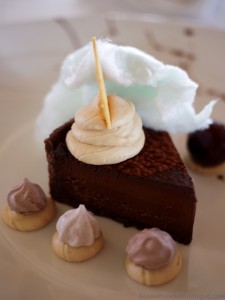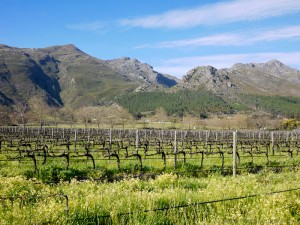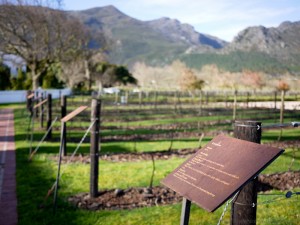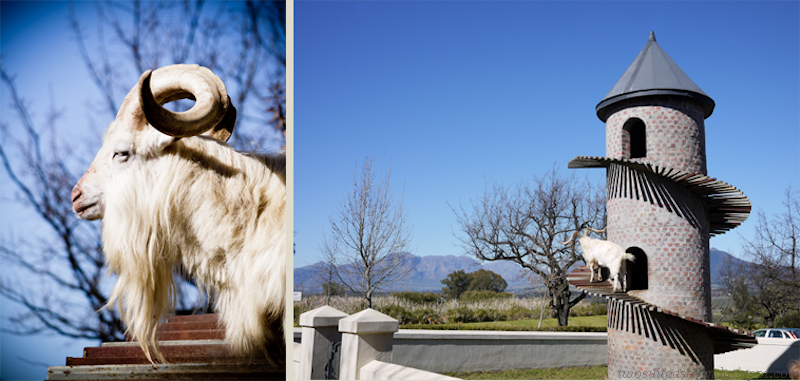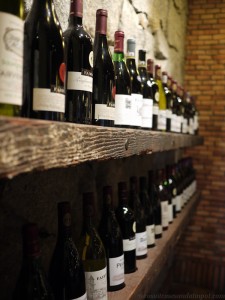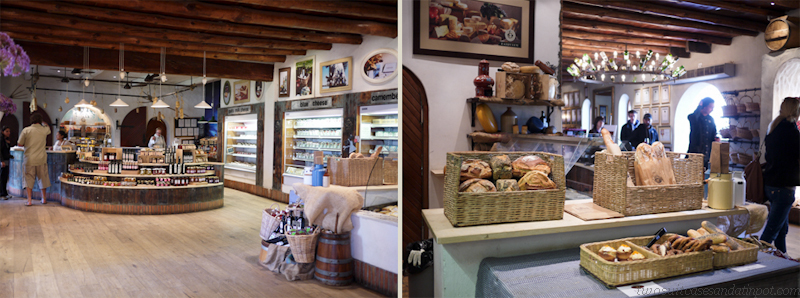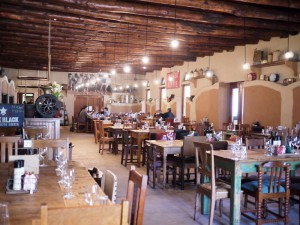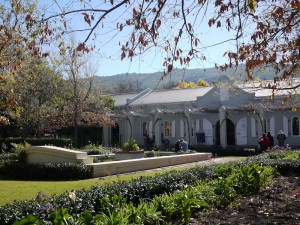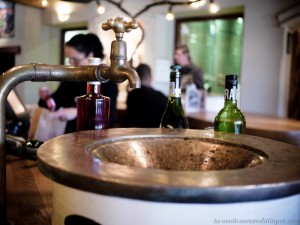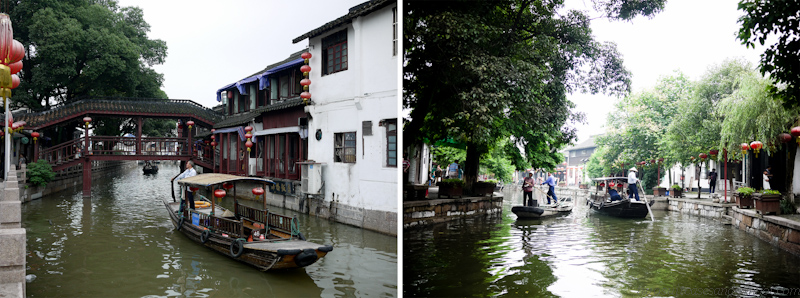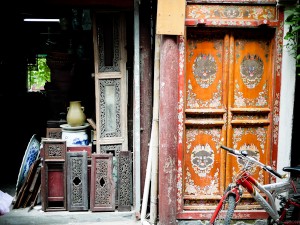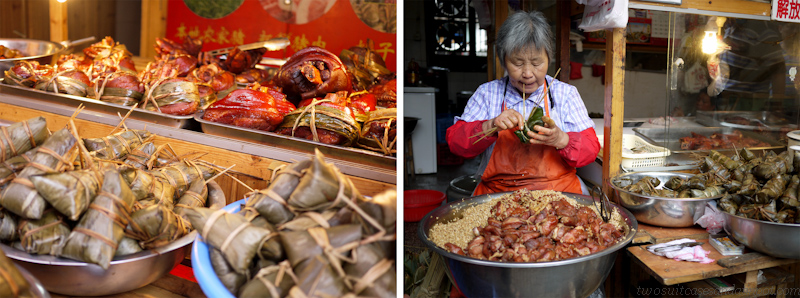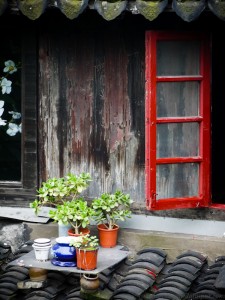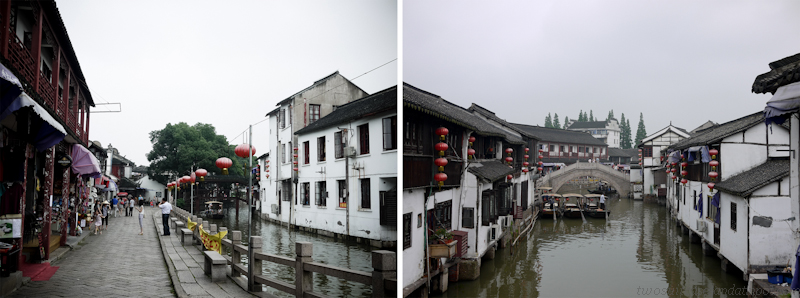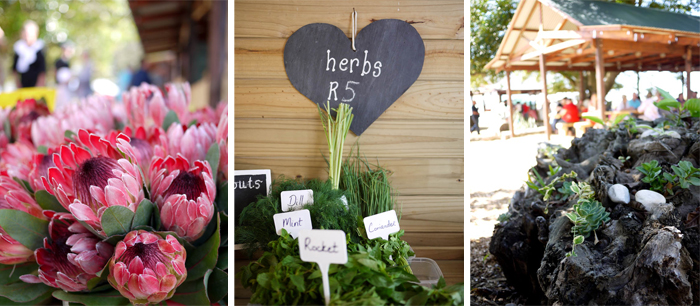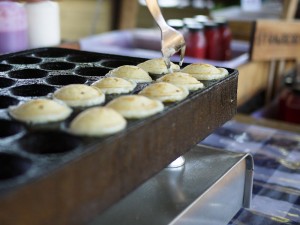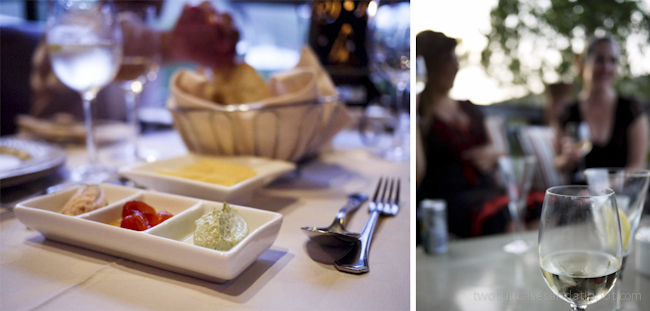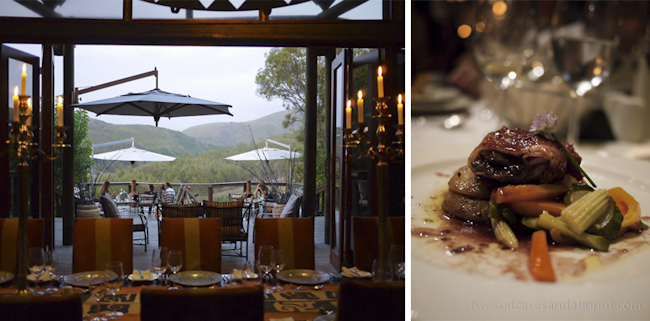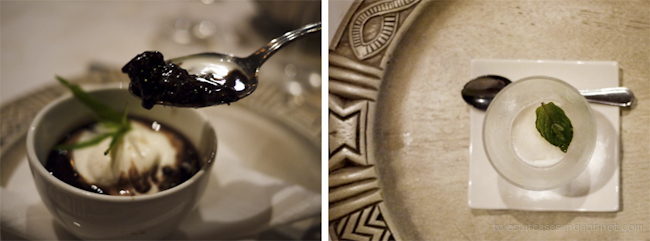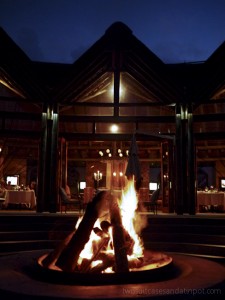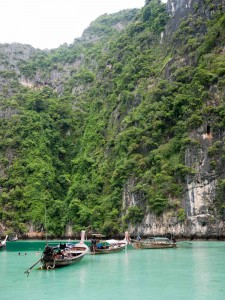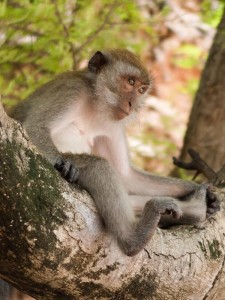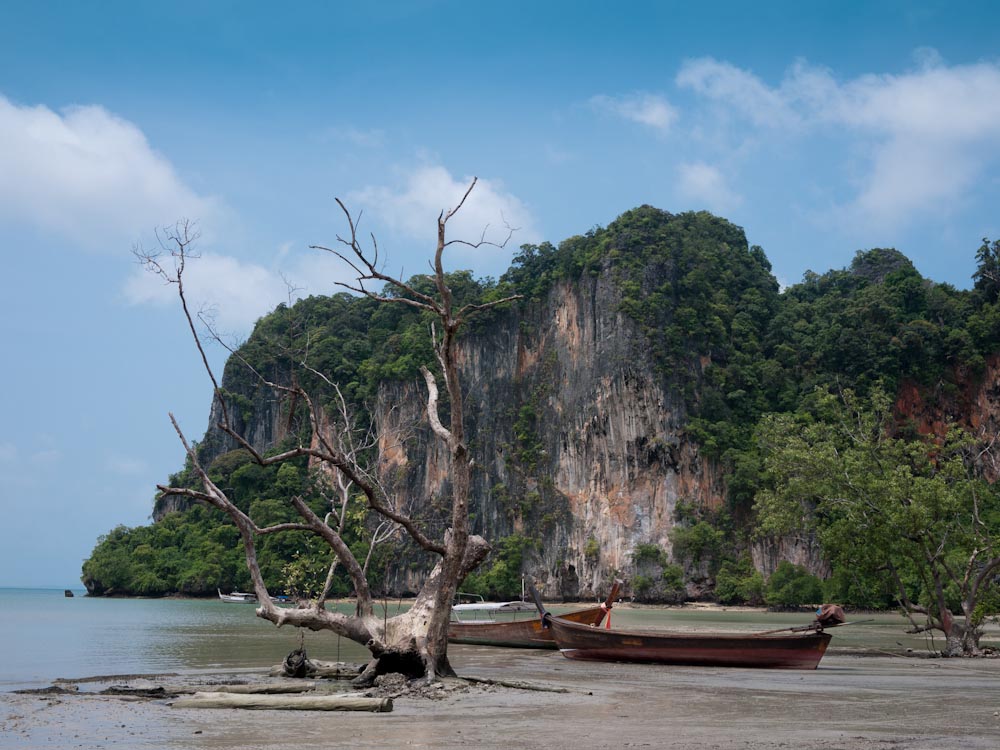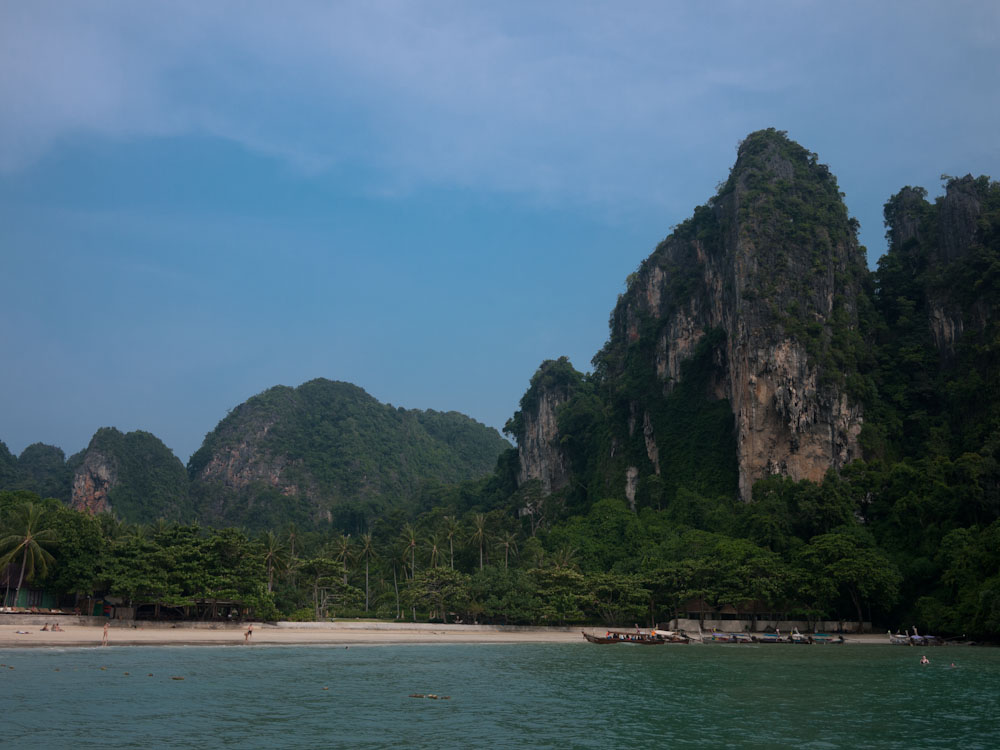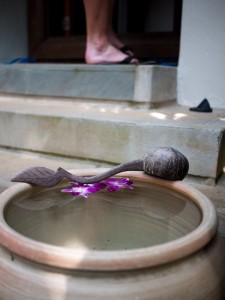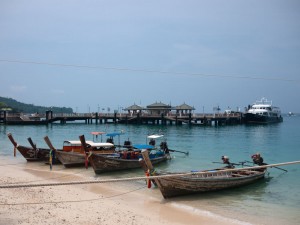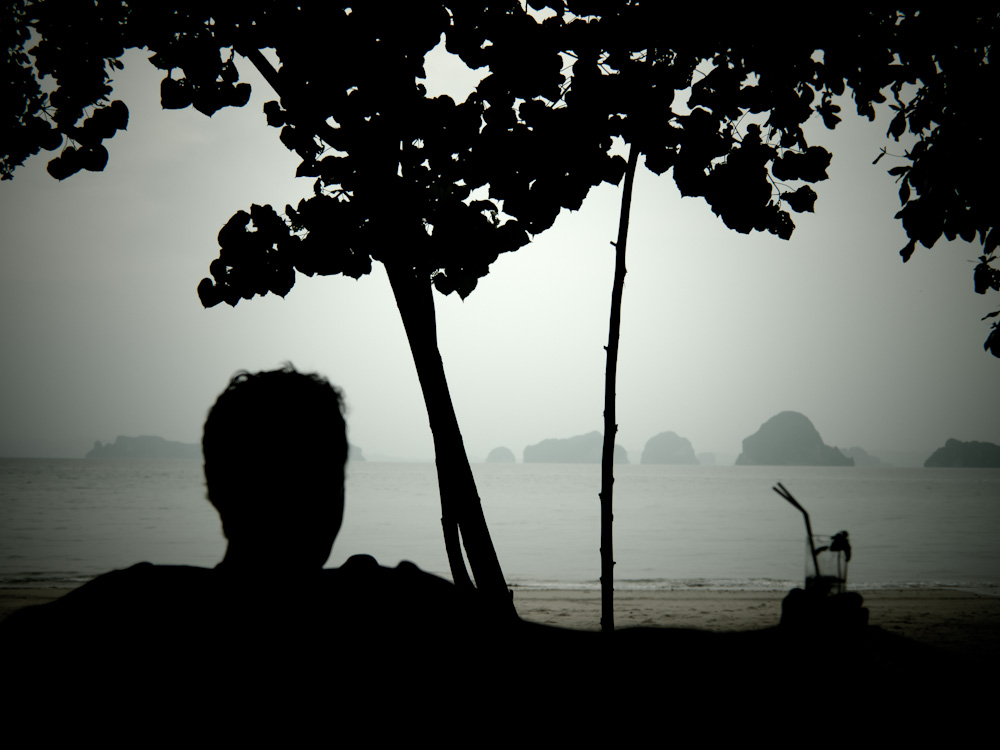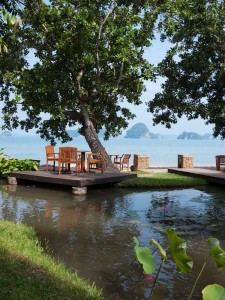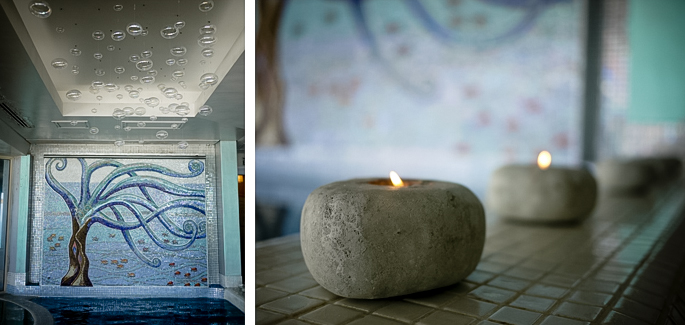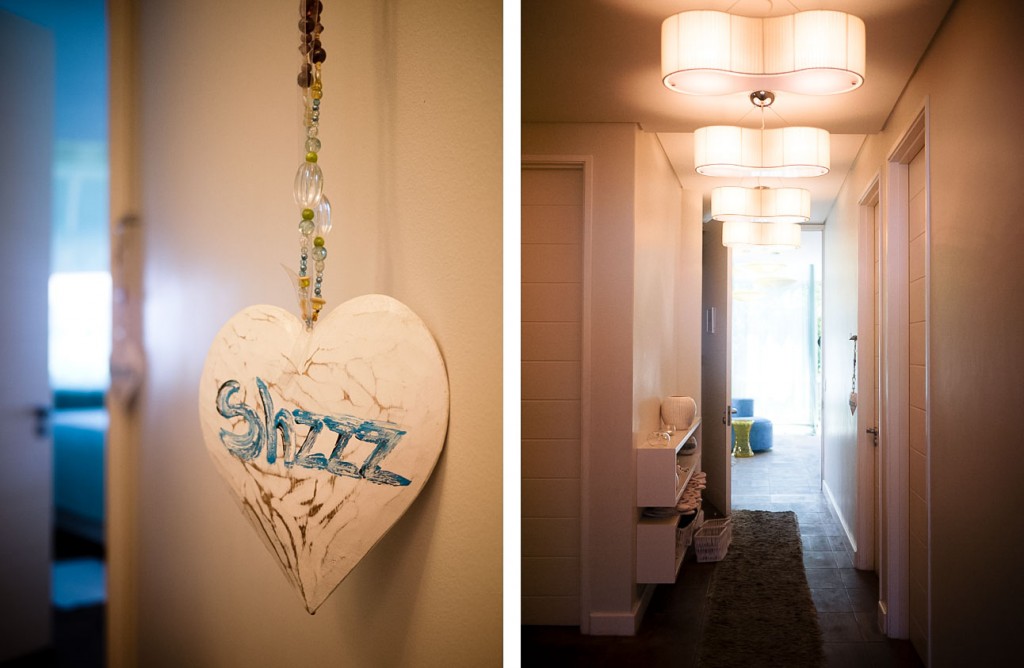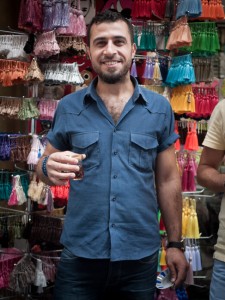
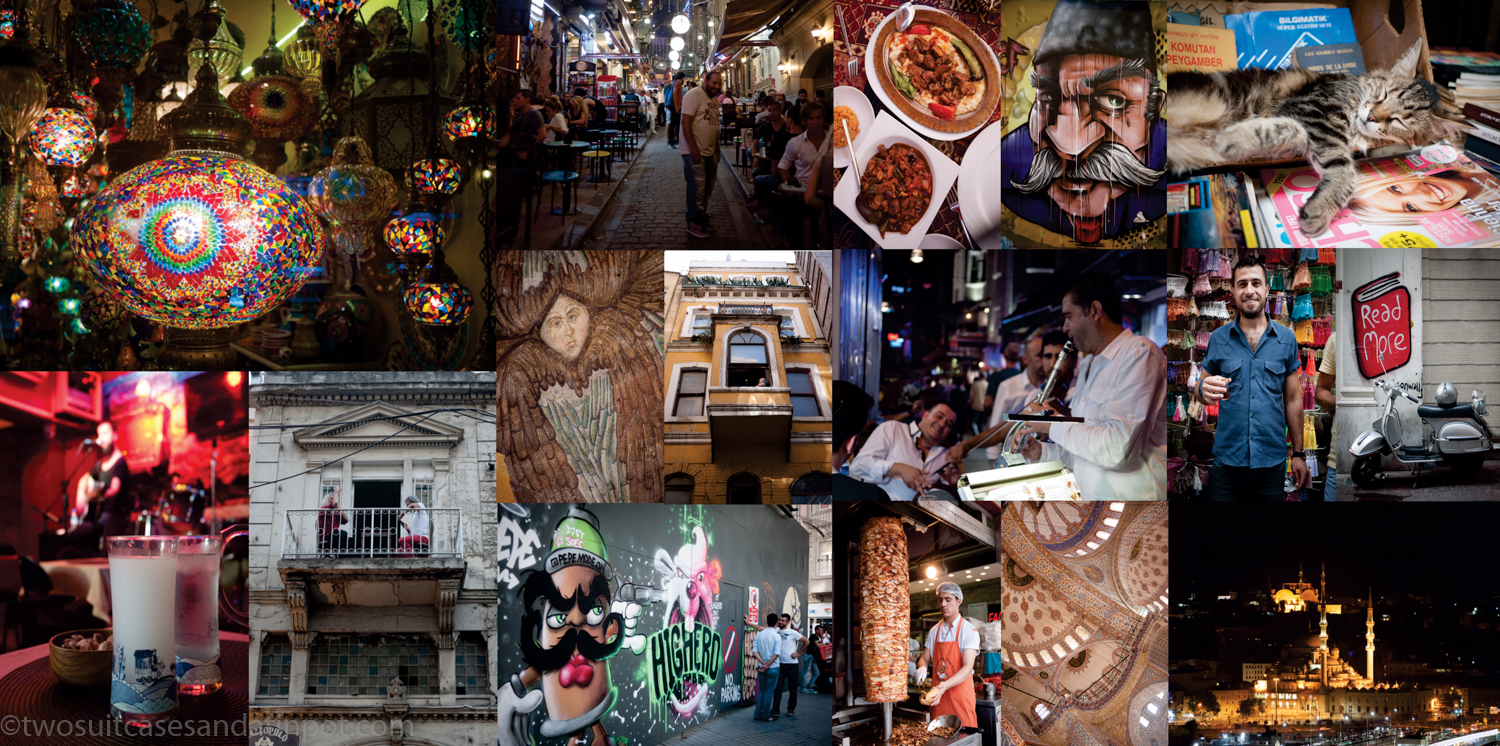
Hello world! It’s been a while. Life took one of those unexpected little turns that we like to say are sent to make us stronger, just so we can all feel better about the bad days and have something to put on those motivational posters that feature fluffy goslings swimming against a current. I will tell you about it. Eventually. But for now, suffice it to say I am back (edit – it has now been two years and I have not written a thing, proving that owning a restaurant is not for sissies and we should have an entire section of the motivation poster market set aside just for us), not only to my old self, but out in the world too and I was lucky enough to travel to Istanbul for a few days with Bush Man. I might get round to a walking tour later (edit – no I won’t), but for now I just want to give you a glimpse into why I wish I could change my marital status on Facebook to “In a relationship with Istanbul”. So here, in no particular order, are the top ten reasons why I am completely in love with this city.
The cats.
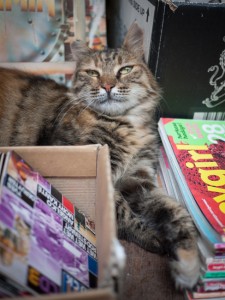
If two cats are a party, and three cats are a crazy cat lady, then Istanbul will one day die choking on a tin of Pampers and have her face eaten off by Mugsy, Snowball, Tiger and the rest of them. There are a LOT of cats in Istanbul. So let me just admit that I loved that and get the crazy cat lady business out of the way so we can all move on. If you don’t like cats, remind yourself that in a city with upwards of 14 million people, at least cats mean no rats. Most of the cats don’t belong to anyone, and are instead taken care of by whoever happens to be around. You will find bowls of water and little piles of kibble scattered randomly under trees and in front of shop fronts. Shop owners seem to have no problem when the cats make themselves at home on chairs, bookshelves and windowsills, and I didn’t see a single cat come up for a bit of affection and not get it, no matter how much fur it was missing. There’s something so comforting about watching these street dwelling felines in various states of dishevelment being taken care of by strangers and feeling comfortable enough with people to plonk themselves down for a nap anywhere on a street that could see three million people pound its cobbled sidewalk a foot away from them every day and know they are safe.
The people.
Check any travel forum for advice on tourist scams and they’ll tell you that unsolicited offers to help and lazy pick up lines like “Where are you from?” are the number one way for dodgy swindlers to relieve you of your hard earned holiday funds. But the people of Istanbul are genuinely friendly and open to strangers and, for the most part, honestly just want a bit of a chat or to show you how the metro works without expecting anything in return. I’m actually sorry I brushed off a few well meaning strangers while clutching my bag tighter and checking my pocket for my phone before realising this. My advice? Be friendly and open when approached and just ask yourself WWOD? Oprah would say never allow yourself to be taken to a second location. Anyone who offers to show you a nice place for a drink, haircut or bit of carpet shopping (as this isn’t Thailand, we’re talking rugs here, not ladies) is out to swindle you. (We fell for this one in Bangkok and landed up paying around $15 for two drinks, surrounded by mean looking heavies at the Super Pussies ping pong bar. I wish I was making this up. It was the other kind of carpet shopping.) But if they just leave it at chatting or a bit of advice on their favourite dürum joint, chances are they’re just being nice.
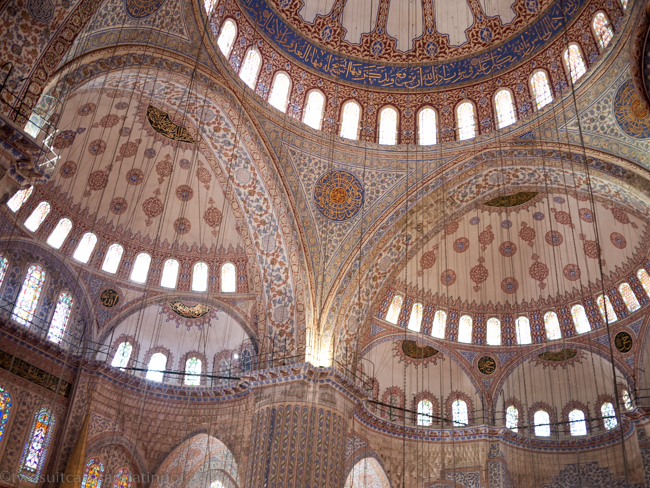
The mosaics.
Whether it’s the spectacular domed ceiling of the Blue Mosque, random bits of pavement or a wall behind a loo, the city is full of colourful tiles and bits of glass. My favourite is the enigmatic full mooned faced of the six winged seraph on the ceiling of the Hagia Sophia, but I loved the random discovery of a mosaic-ed drain cover or bit of wall down an otherwise drab, dodgy alley almost as much. And the great thing is that you can take a little part of the magic home with you in the form of mosaic glass lamps in every size and combination of colours your little heart could desire. Something tells me that the locals feel about these lamps the way South Africans do about those vile wooden giraffes that the tourists love to buy despite the logistical nightmare of getting a 2m tall carved animal home on a Boeing. But I loved the little shops cluttered with rainbow hued balls of light on every corner frequented by tourists with what the Turks probably think is a questionable taste in interior decorating. It is happiness at the flip of a light switch.
Tea time.
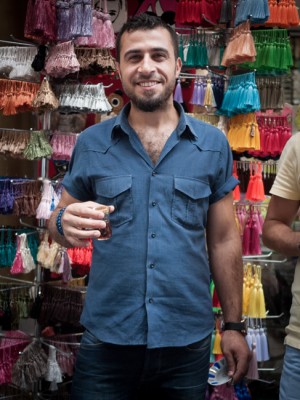
Not to drink it, but to watch the subtle ritual of others drinking it. Turks love their tea (çay). It is taken in delicate, tulip shaped glasses at any time of the day by just about everyone and is most often seen on the streets in front of the mom and pop shops. A few times a day, as if on cue, a young boy or old man will appear with a tray of tea that they then distribute to the shopkeepers who come out and watch the world go by with a cuppa in hand. The tea is simply sweetened with a bit of sugar and stirred with a tiny spoon that makes a tinkle almost as pleasing as ice in a long G&T. Almost… You get some big Turks, and I could spend hours watching the incongruity of a strapping lad or wizened old fruit seller delicately holding a painted saucer with a fine, flowery glass until the tea is just the right temperature to drink – there being no handles on the glasses. Like the cats I mentioned earlier, the simpleness of being content with a cup of tea while you watch the world go by makes it seem like everything is going to be okay after all. Am I weird? I’m probably weird. But then I’ve always felt about tea the way my dad feels about regular bowel movements: It fixes just about everything.
The food.
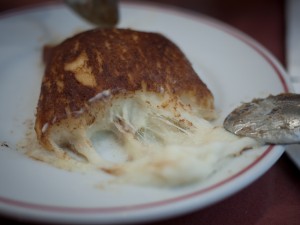
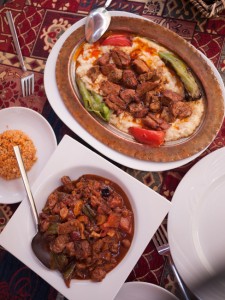
Oh my. The food! For less than US$3, you can have a properly good meal on the streets of Istanbul. Obviously any talk of Turkish food would be incomplete without the mention of kebabs. In every shape and form – from ground to shredded, lamb to chicken, wrapped in flat breads, on half loaves, with rice or just wrapped around a skewer – like sex and pizza, even when it’s bad, kebabs are still pretty good. But my two standout dishes in Istanbul were the kazandibi at Saray Muhallebicisi on İstiklâland the hünkar beğendi at The Old Ottoman Cafe & Restaurant in Cagaloglu Hamam Sokak. When I first read about tavuk göğsü, I knew I had to try it just so I could see how anyone could boil up chicken breast in milk till it disintegrates and then call it pudding. Kazandibi is the browned bit of this ridiculously weird pudding that sticks to the bottom of the pan when it’s all done. Who comes up with this shit? I don’t know. But God bless the person who did! It is unlike anything I have ever eaten. If a South African milktart got together with a buttery English toffee at a pudding conference, then kazandibi would be the intercontinental love child borne from their romp in the janitor’s closet. It is firm, springy, gooey and creamy all at once, with a sort of buttery, caramelly nuttiness from the toasted bits. Just trust me, try it the first chance you get and thank me later. On the savoury side, hünkar beğendi is better known as Sultan’s Delight and might be familiar to you if you’ve ever eaten in a Turkish restaurant. But I’ve never had it like this before! Aubergine (if the version is done in the authentic way) is first roasted over coals or fire and then pureed with kaşar cheese – a mild sheep’s cheese similar to cheddar. This is then topped with cubes of lamb or beef in a delicate tomato based sauce. Now if you’re anything like me you’re thinking, pureed vegetables? Bleh. Stewed meat? Meh. But a good hünkar beğendi is simple food in its most sublime form. The delicate smokiness of the flame scorched aubergine at The Old Ottoman contrasted beautifully with the creaminess of the cheese, and the umaminess (if that’s not a word, then it should be) and substance of the tomato rich meat added just enough texture to stop it from being fancy baby food. It is a hug for your soul right there on a plate.
Cold beers and rooftop bars.
No need for too much elaborating here. Cold beer. A rooftop. Endless views of a beautiful city. Enough said. Two of our favourites were 360 Istanbul and Balkon. At the former, the maître d’ looked down her snooty nose when we walked in and asked to see whether we had closed shoes on when we said we just wanted drinks. I was quite relieved that I don’t generally tour in my strappy Manolo Blahnik sandals as I would obviously have had to leave them at the door along with my little backpack that she clearly thought I was planning on smuggling the salt and pepper shakers out in. But the bar lady was lovely, even pulling up two chairs so we could sit on the Bosphorus side of the patio after the aforementioned stuck up welcoming party had relegated us to the back patio. It’s not cheap. At all. But it will be one of those memories of the city that’s worth every cent. Balkon is considerably cheaper and more laid back, with a slightly less impressive view. But it has an effortlessly cool vibe if you’re under 40 (just made it!) and you get to keep your bag with you and everything! I am actually more of a wine drinker, but I found wine by the glass in most places not only expensive (anything upwards of TL18 for swill) , but often undrinkable.
The graffiti.
There will always be that dumbass who feels the need to draw on monuments and store fronts, but generally graffiti is limited to ugly roller doors and derelict alleys where they add a splash of colour and social comment where you’d least expect it. The bright colours and modern themes (think Tupac, Batman and angry baseballs) against the backdrop of the subdued greys of buildings that are hundreds of years old just works in a very pleasing way and is a gentle reminder that people in this city like to express themselves and be heard.
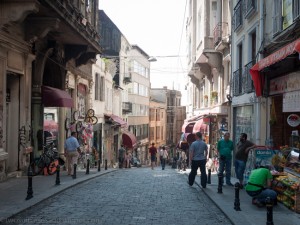
The architecture on İstiklâl Caddesi.
There’s a lot to see on the streets in and around İstiklâl Avenue, but it’s definitely worth risking a strained neck muscle or two to look up as much as possible. Old and new merge together perfectly in a hodgepodge of Neo-Classical, Neo-Gothic, Renaissance Revival, Art Nouveau, Art Deco and First Turkish National Architecture style facades above with modern shop fronts below with the odd mosque or church thrown in for good measure. Crumbling plaster sits comfortably alongside brightly painted walls and, like a toddler who has dressed themselves, the whole ensemble just works even though it really shouldn’t. The cafés, boutiques, music stores, art galleries, bookshops, craft stores and pubs in Beyoğlu are some of the most unique I have ever seen, with modern crystal chandeliers fighting worn mosaics for ceiling space, mezzanine floors, exposed brick gouged out of old plaster finished off with modern trimmings and so many interesting touches that we started annoying each other with all the “Check that out!”s. Loved it!
The streets.
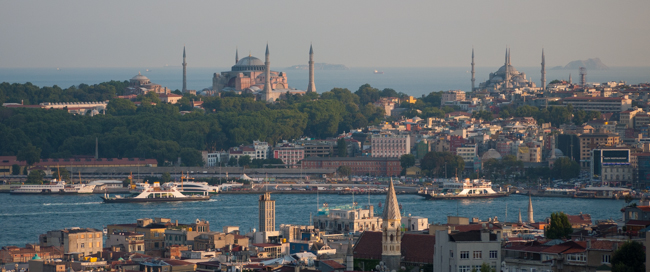
Like all cities where restaurant tables and store shelves are given free reign to spill onto pavements, and whole streets are closed off to cars in favour of window shopping pedestrians, Istanbul has a bustling street life. All over the city, merchants sell as much of their wares outside as they do inside, and there are random stools and tables serving patrons everything from deep fried mushrooms to sheep’s head sarmies on the busiest roads and down the tiniest alleys, creating the type of cosmopolitan cacophony that can only work so well in a city as international as this. A bit on the touristy side, the area around the intersection of Nevizade Sokak and the Balık Pazarı in Beyoğlu must be one of the best spots to grab a çay and nargile pipe and watch life spilling into the streets. There are buskers, flower sellers, fish mongers, old men with trays of tea, fresh roasted almond peddlers, Turkish families from all over the country out to see the bright lights of the big city and, of course, foreigners soaking it all in. This area has loads of wine bars and restaurants serving meze (and you know meze means getting stuck for hours) and is where it all happens after dark on this side of the Galata tower. Even at 5:00 in the morning you will find groups of people scattered up İstiklâl, gathered around singing along to a fairly inebriated guitarist or just strolling off last night’s party.
The call to prayer.
I realise I can just stick my head out the door at work six times a day and hear the Muslim call to prayer back home, but there is something special about hearing the calls emanate from the great mosques all over the city, especially the akşam at sunset when the last light has settled over the minarets of the Süleymaniye Mosque. It is too beautiful! But take it from me and ensure you are nowhere near a mosque when the call starts. Hearing one up close instead of as part of a whole is like standing in front of that tone deaf Maria Callas wannabe who used to belt out false hymns at church on Sunday mornings. In chorus though, it can instill in one a sense of calm and rightness with the world which, like the rest of this warm city, gives you hope that in the end we really can all just get along.

